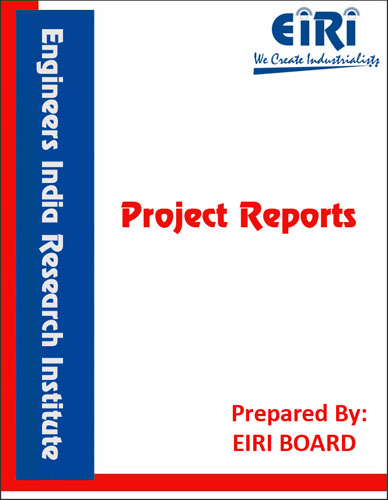The project report includes Present Market Position and Expected Future Demand, Market Size, Statistics, Trends, SWOT Analysis and Forecasts. Report provides a comprehensive analysis from industry covering detailed reporting and evaluates the position of the industry by providing insights to the SWOT analysis of the industry.
India is the home of mangoes. A large number of varieties are found in almost all parts of the country. According to statistics collected by the Fruit Development Adviser, Government of India, out of the total fruit acreage of 12,79,000 ha mangoes alone covered 8,19,000 ha in 1948-49 i.e. nearly 70 per cent of total area under fruits. Uttar Pradesh, Tamil Nadu, Karnataka, Bihar and West Bengal lead in mango growing.
Among the numerous varieties, `Safaida’ and `Duschri’ of U.P. `Alphonso’ of Ratnagiri, `Badami’ of Mysore, `Benishan’ of East Coast, and `Raspuri’ `Neelam’ and `Mulgoa’ of Tamil nadu and Karnataka are the most important varieties for canning. The ‘Bangalora’ or `Totapari’ mango which is an assured and heavy annual beater, and also yields an excellent pulp or juice, is sometimes canned to give a fairly good canned product. Juicy and fibrous varieties are not quite suitable for canning. They are mostly used for making juice, squash, nectar, chutney and pickles.
The mango is one of the oldest tropical fruits and has been cultivated by man for over 1000 years, originating apparently in Indo-Burma region. to the large population of Asia, particularly Southern Asia and Malaysia, the mango plays the role as the major fruit of the region, much as the apple looms in importance in North America and Europe.
The fruit is eaten in its raw, fresh form when ripe. Unripened fruits are commonly used for preparing jellies, jams and preserves. Mango blends well with numerious processed foods, such as ice creams. The pulp of the fruit is soft and tasty (pequant). Some persons not subtle presence of a turpentine like characteristics in some varieties although the aroma is delicately pleasant. It is also used to prepare squash, nectar beverages etc.
Fruit Juices are prepared from fruits which have characteristic flavour,aroma and posses a palatable balance between acidity and sugar, blending of juices form 2 or more varieties of fruits is often affected to secure this balance. Mango, pineapple, grape-fruit, orange, apple, lemon are the most important fruits used for the preparation of fruit juice. Their production is comparatively limited because of the high prices and the grater popularity of synthetic and aerated drinks among a bulk of population. Different forms of fruit juices are given below :-
1. UNFERMENTED JUICE OR PURE FRUIT JUICE
This is a natural juice pressed out of a fruit and remains practically unaltered in its composition during its preparation and preservation.
2. FRUIT JUICE BEVERAGE
This is a fruit juice which is considerably altered in composition before consumption. It may be diluted before being served.
3. FERMENTED FRUIT BEVERAGES
This is a juice width has under gone alcoholic fermentation by yeast. The product contains varying quantities of alcohol e.g. grape wines and apple ciders.
4. FRUIT JUICE SQUASH
This consists essentially of strained juice containing moderate quantities of fruit pulp to which cone sugar is added for sweetening e.g. orange squash, lemon squash and mango squash.
5. FRUIT JUICE CORDIAL
This is sparkling, clear, sweetened fruit juice which all the pulp and other suspended materials have been completely eliminated e.g. lime cordial.
6. SHERBET OR SYRUP
This is clear sugar syrup which has been artificially flavoured e.g. sherbets of sandal, sengtra and almond etc.
7. FRUIT JUICE CONCENTRATE
This is a fruit juice which has been concentrated by the removal of water either by heat or by freezing. Carbonated beverage and other products are made form this.
INTRODUCTION
USES AND APPLICATIONS
PROPERTIES AND COMPOSITION
B.I.S. SPECIFICATIONS
SPECIFICATION OF ALBHORSO MANGO PULP
MARKET SURVEY
EXPORT OF MANGO PULP
DETAILED EXPORT DATA OF MANGO PULP
CANNED MANGO PULP
MANUFACTURING PROCESS OF MANGO PULP
MANUFACTURING PROCESS OF MANGO PULP (CFTRI PROCESS)
FLOW SHEET FOR PRODUCTION OF CANNED MANGO PULP
AVAILABILITY OF RAW MATERIAL
AVERAGE CONSTITUENTS OF RAW MANGO
PROCESSING DETAILS OF MANGO PULP
CHEMICAL PRESERVATIVES
OUTLINE OF THE CANNING PROCESS
DETAILS OF CANNING
SPECIFICATIONS OF LACQUERED TIN CANS
PROCESS FLOW DIAGRAM OF MANGO PULP
ANALYSIS OF MARKETING MIX OF VARIOUS MANGO PULP
BRANDS IN SOUTH GUJARAT
PLANT LAYOUT
SUPPLIERS OF RAW MATERIALS
MANGOES AND SUGAR IS AVAILABLE ALL OVER INDIA
AND THEY CAN BE PURCHASED FROM ANY
MARKET OR LOCALLY SUPPLIERS.
SUPPLIERS OF PLANT AND MACHINERIES
SUPPLIERS OF PLANT & MACHINERIES (IMPORTED)
APPENDIX – A :
1. COST OF PLANT ECONOMICS
2. LAND & BUILDING
3. PLANT AND MACHINERY
4. FIXED CAPITAL INVESTMENT
5. RAW MATERIAL
6. SALARY AND WAGES
7. UTILITIES AND OVERHEADS
8. TOTAL WORKING CAPITAL
9. COST OF PRODUCTION
10. PROFITABILITY ANALYSIS
11. BREAK EVEN POINT
12. RESOURCES OF FINANCE
13. INTEREST CHART
14. DEPRECIATION CHART
15. CASH FLOW STATEMENT
16. PROJECTED BALANCE SHEET




